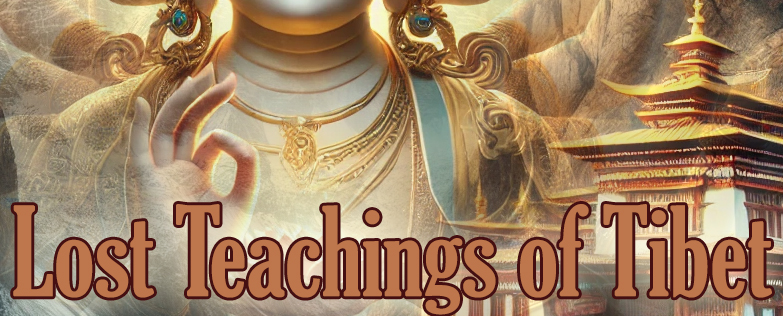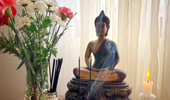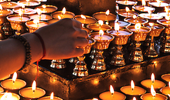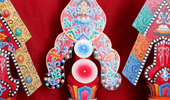Chapter 7: Reconstructing the Lost Bon Scriptures
The Bon tradition, Tibet’s indigenous spiritual system, predates the arrival of Buddhism and has shaped the cultural and religious landscape of the Tibetan people for millennia.
Despite periods of persecution and marginalization, the teachings of Bon have survived, albeit with many texts lost or hidden over the centuries.
The process of reconstructing the lost Bon scriptures involves piecing together ancient manuscripts, oral histories, and revealed texts (terma), which offer profound insights into cosmology, rituals, and the spiritual practices of the Bonpo people. |
The Origins of Bon and Its Scriptures
Bon traces its origins to the mystical kingdom of Shang Shung, an ancient civilization believed to have existed in the regions surrounding Mount Kailash. From this land, the Bon teachings spread across Tibet, establishing a rich tradition of shamanistic practices, ancestor worship, and an intricate cosmology that parallels yet remains distinct from Buddhist teachings.
The Bon Kangyur and Bon Tengyur, collections of the Bonpo canon, contain the surviving texts of the Bon tradition. However, many Bon teachings were hidden during times of persecution, leading to a tradition of terma or “hidden treasures” that were revealed by tertöns (treasure revealers) at later times when the teachings were needed. |
The Twelve Stages of Creation in Bon Cosmology
Bon cosmology begins with the Twelve Stages of Creation, which describe the unfolding of the universe from a primal state of emptiness into the manifest world. These stages are unique to Bon and provide a framework for understanding the nature of existence and the role of human beings in the cosmos.
-
The Primal Emptiness
In the beginning, there was only vast, boundless space, known as gyuma. This state is similar to the Buddhist concept of Shunyata, yet in Bon, it is seen as the fertile ground from which all things arise.
-
The Cosmic Egg
From the primal void, the cosmic egg emerged, containing the seeds of creation. This egg symbolizes the potential for all forms of life, matter, and consciousness.
-
The Birth of the Elements
The cosmic egg splits, releasing the five elements—earth, water, fire, air, and space—which form the building blocks of the universe. Each element is associated with a specific deity in Bon tradition, representing the forces that sustain life.
- The Emergence of Deities and Spirits
As the universe takes shape, deities and spirits are born from the elements. These beings, both benevolent and malevolent, play a crucial role in shaping human destiny and the natural world.
The remaining stages describe the creation of the physical world, the introduction of human beings, and the interplay between divine beings and humanity.
These stages emphasize the cyclical nature of existence, with periods of creation followed by dissolution, mirroring the Bon belief in the impermanence and interdependence of all things. |
Bon Rituals and Magic
Bonpo practitioners engage in a wide range of rituals aimed at maintaining harmony between the human world and the spiritual realms. These rituals often involve offerings to spirits, deities, and ancestors, as well as the use of magical practices to influence the forces of nature.
-
Oracles and Divination
Bon rituals frequently include the use of oracles, who enter into trance states to communicate with deities and spirits. These oracles are consulted for guidance on important decisions, especially in matters related to health, protection, and spiritual well-being.
-
Elemental Worship
Bon practitioners maintain a close relationship with the natural world, particularly the five elements. Rituals are performed to honor the elements and ensure balance, which is believed to bring prosperity, health, and spiritual growth to the community.
-
Shamanic Healing
Bon shamans, known as ngakpas, use their connection with the spirit world to perform healing rituals. These ceremonies often involve drumming, chanting, and the invocation of protective deities to cleanse the patient of negative energies and restore balance to the body and mind.
|
Revealed Texts (Terma) and the Role of Tertöns
During periods of suppression, many Bon texts were hidden by masters to protect them from destruction. These texts were later rediscovered by tertöns, who are believed to have the spiritual ability to locate and interpret the hidden treasures. The most famous of these tertöns is Shenrab Miwoche, considered the founder of the Bon tradition, who is said to have revealed numerous texts that had been hidden for future generations.
- Terma texts often contain esoteric teachings on Dzogchen (The Great Perfection), Tantric practices, and meditation techniques aimed at realizing the true nature of mind. These texts are considered especially sacred, as they are believed to hold the keys to enlightenment and the protection of the Bonpo people.
|
Bon and Buddhism: Syncretism and Divergence
While Bon and Tibetan Buddhism share many similarities, such as the belief in reincarnation and karma, there are also key differences. Bon places greater emphasis on shamanism, ancestral worship, and the spiritual forces of the natural world, whereas Tibetan Buddhism focuses more on the teachings of the Buddha and the path to liberation through compassion and wisdom.
Throughout history, the two traditions have influenced each other, leading to a syncretism of practices. However, Bon has retained its distinct identity, with its own set of deities, cosmology, and ritual practices. |
The Preservation of Bon in Exile
The story of Bon preservation is a powerful reminder of resilience through exile. As Bonpo lamas fled following the invasion of Tibet in 1950, they undertook the monumental task of rebuilding monasteries in Nepal and India, with Menri Monastery becoming a key center for safeguarding Bon teachings.
In modern times, figures like Tenzin Wangyal Rinpoche have bridged Bon wisdom with Western audiences, keeping the tradition alive and relevant.
Even when displaced, cultural and spiritual roots can thrive through effort, adaptation, and shared teachings. It’s an inspiration for how traditions endure, evolve, and enrich new landscapes across generations.
Today, Bon monasteries in Nepal and India, particularly Menri Monastery, serve as important centers for the preservation and study of Bon texts.
|
|
|














